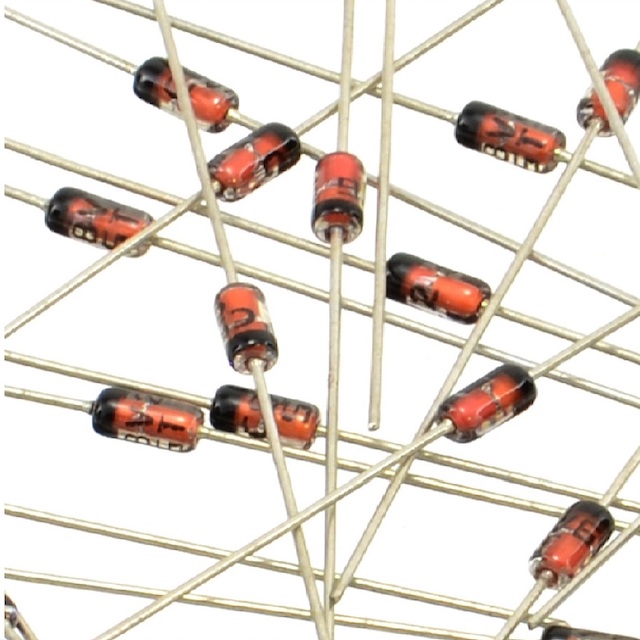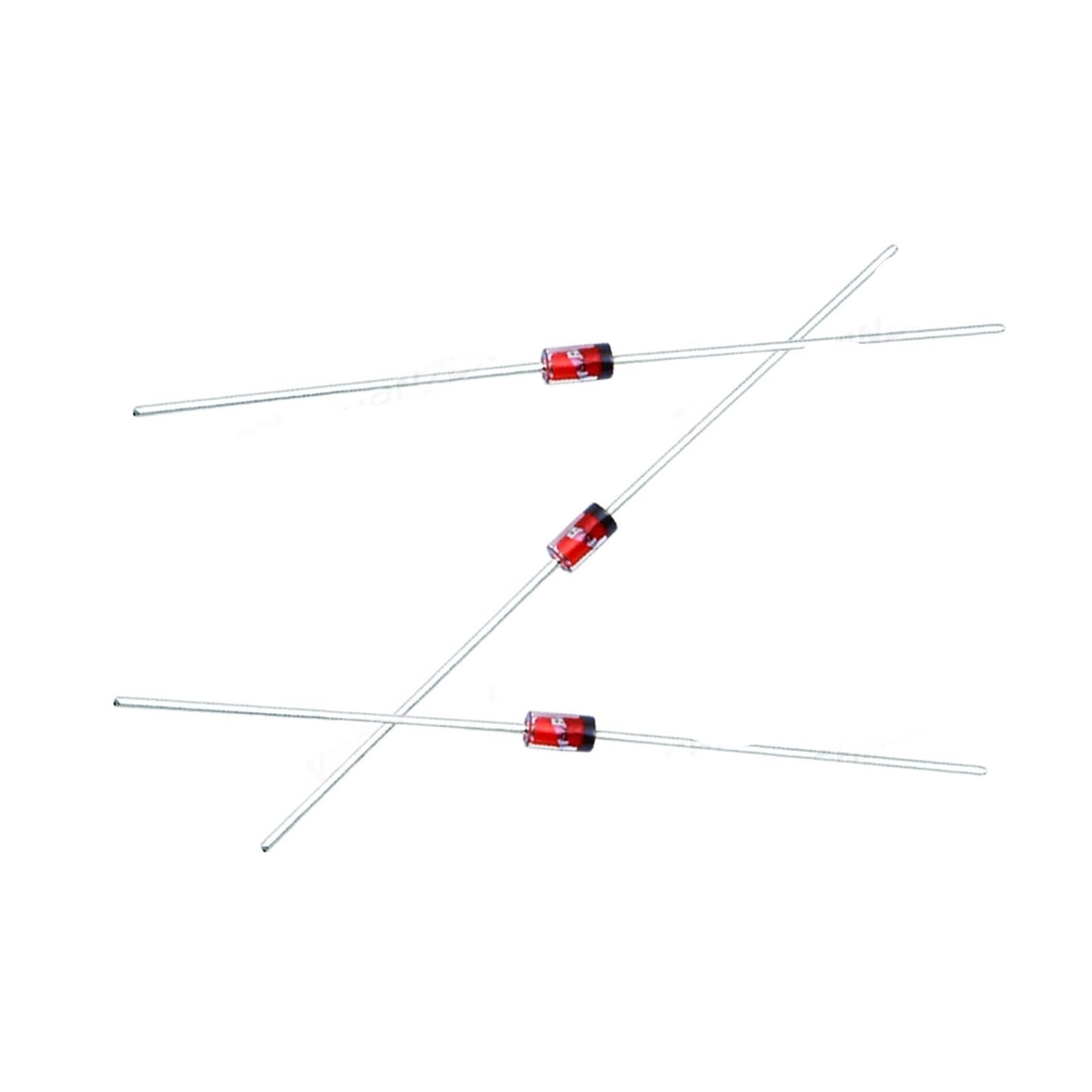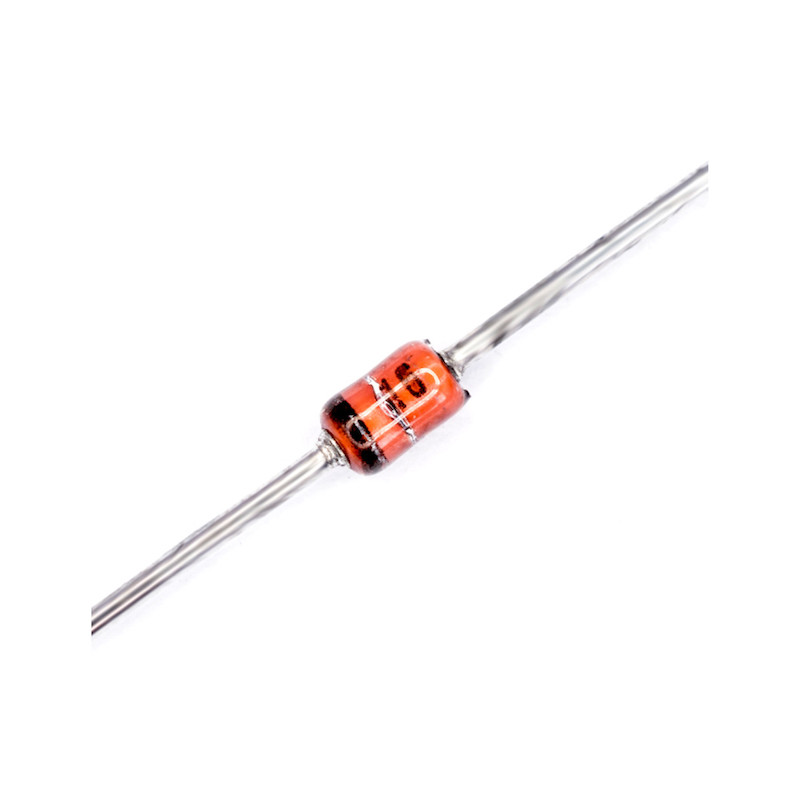Introduction
In the world of electronics, diodes are essential components that allow current to flow in one direction while blocking it in the opposite direction. Among the various types of diodes, two of the most commonly used are the zener diode and regular diode. While both serve similar functions, there are key differences between the two that make them suitable for different applications. In this article, we will delve into the differences between zener diodes and regular diodes, their construction, characteristics, and applications.
Part 1: Understanding Diodes
Level 1: Basics of Diodes
A diode is a two-terminal electronic component that conducts current primarily in one direction. It consists of a p-n junction, which allows the flow of current when a forward bias voltage is applied, and blocks the flow of current in the reverse bias.
Level 2: Construction of Regular Diode
Regular diodes are typically made of semiconductor materials such as silicon or germanium. They have a single p-n junction, encapsulated in a plastic or glass case. The direction of current flow is denoted by the cathode and anode terminals, with the cathode being the negative terminal and anode being the positive terminal.
Part 2: Characteristics of Regular Diodes
Level 1: Forward Bias and Reverse Bias
Regular diodes conduct current when a forward bias voltage is applied across its terminals, allowing current to flow from the anode to the cathode. In reverse bias, the diode blocks the flow of current, except for a small leakage current.
Level 2: Voltage Drop and Current Rating
When forward biased, regular diodes have a forward voltage drop across its terminals, typically around 0.7V for silicon diodes and 0.3V for germanium diodes. The maximum current rating of a regular diode determines the amount of current it can safely conduct without getting damaged.
Part 3: Understanding Zener Diodes
Level 1: Basics of Zener Diodes
Zener diodes are a special type of diode designed to operate in the reverse breakdown region. They are primarily used for voltage regulation and protection circuits.
Level 2: Construction of Zener Diodes
Zener diodes are constructed similar to regular diodes but are heavily doped to reduce the breakdown voltage across the junction. This allows them to conduct current in the reverse bias at a specific voltage known as the zener voltage.
Part 4: Characteristics of Zener Diodes
Level 1: Zener Voltage and Reverse Current
Zener diodes have a specific zener voltage, which is the voltage at which the diode starts conducting heavily in the reverse bias. Once the zener voltage is reached, the diode maintains a relatively constant voltage across its terminals, making it ideal for voltage regulation.
Level 2: Reverse Breakdown and Power Dissipation
When operated in the reverse bias, zener diodes experience reverse breakdown, where the voltage across the diode remains relatively constant despite changes in current. This allows zener diodes to dissipate power without damage.
Part 5: Applications of Diodes
Level 1: Applications of Regular Diodes
Regular diodes find applications in various electronic circuits such as rectifiers, signal demodulation, and switching circuits. They are also used in power supplies to convert alternating current (AC) to direct current (DC).
Level 2: Applications of Zener Diodes
Zener diodes are widely used in voltage regulation circuits, where a constant voltage supply is required. They are also used in overvoltage protection circuits to prevent damage to sensitive electronic components.

Part 6: Applications of Zener Diodes
Zener diodes are commonly used in a variety of applications where a stable voltage reference is required. One of the main uses of zener diodes is in voltage regulation circuits. By utilizing the zener diode’s unique voltage-regulating characteristics, it is possible to maintain a constant voltage output even when the input voltage varies.
Another significant application of zener diodes is for overvoltage protection. Zener diodes can be used to protect sensitive electronic components from voltage spikes and surges by diverting excess current away from the circuit when the voltage exceeds the breakdown voltage of the zener diode.
Zener diodes are also used in voltage-limiting circuits, where they are employed to limit the voltage across a specific component or section of a circuit. This is particularly useful in preventing damage caused by excessive voltage levels.
Additionally, zener diodes are commonly used in power supplies, voltage reference circuits, and as temperature sensors due to their stable and predictable voltage characteristics. Overall, zener diodes play a critical role in many electronic applications where precise and stable voltage regulation is necessary.
Part 7: Zener Diodes in Electronic Devices
Zener diodes find widespread use in electronic devices across various industries. In consumer electronics, zener diodes are often incorporated into voltage regulation circuits in power supplies for items such as computers, televisions, and mobile phones. Their ability to provide a stable voltage output is essential for ensuring the proper functioning of these devices.
In automotive electronics, zener diodes are utilized for voltage regulation and overvoltage protection, helping to safeguard sensitive electronic components from potential damage caused by fluctuations in the vehicle’s electrical system.
In industrial applications, zener diodes are employed in a wide range of electronic equipment, including control systems, instrumentation, and power distribution systems. Their ability to maintain a constant voltage reference is crucial for the reliable operation of these systems.
Overall, zener diodes are integral to the functionality and longevity of electronic devices in various sectors, where their voltage regulation and overvoltage protection capabilities are essential for ensuring the reliable and safe operation of electronic equipment.
Part 8: Zener Diode vs Diode
In conclusion, both zener diodes and regular diodes play critical roles in electronic circuits, each with their unique characteristics and applications.
While regular diodes are commonly utilized for rectification and signal modulation in electronic circuits, zener diodes are specifically designed for voltage regulation and overvoltage protection. The utilization of the zener effect allows zener diodes to maintain a constant voltage output. And making them invaluable for applications requiring stable voltage references.
Overall, understanding the differences between zener diodes and regular diodes is crucial for designing and implementing electronic circuits to ensure the proper functionality and protection of electronic components. By selecting the appropriate type of diode for a specific application, engineers and designers can ensure the reliable and safe operation of electronic systems.
Zener diodes are widely used in various applications where voltage regulation or voltage reference is required. One of the most common applications of a zener diode is in voltage regulation. This makes it ideal for applications such as voltage regulators in power supplies. A stable output voltage is necessary for the proper operation of electronic devices.
Another important application of zener diodes is in voltage reference circuits. Zener diodes can serve as a stable reference voltage source in precision voltage circuits, where a constant and accurate voltage level is required. This makes them useful in applications. Such as analog-to-digital converters, where a stable reference voltage is needed for accurate conversion of analog signals to digital values.
Conclusion
Zener diodes are also used in protection circuits to limit voltage spikes and prevent damage to sensitive electronic components. For example, they are often used in conjunction with other components. Such as resistors and capacitors to create overvoltage protection circuits in electronic devices. In these circuits, the zener diode conducts only when the voltage exceeds a certain level.
Furthermore, zener diodes find applications in signal clamping and clipping circuits in various electronic systems. Zener diodes can be used to limit the amplitude of signals to prevent distortion or damage to downstream components. They can also be used in signal clipping circuits to remove unwanted portions of a signal beyond a certain threshold. Ensuring that the output signal remains within desired bounds. Regular diodes are primarily used for rectification and switching. Zener diodes are designed for voltage regulation and overvoltage protection. Understanding the differences between the two types of diodes is crucial for selecting the right component for specific electronic applications.











